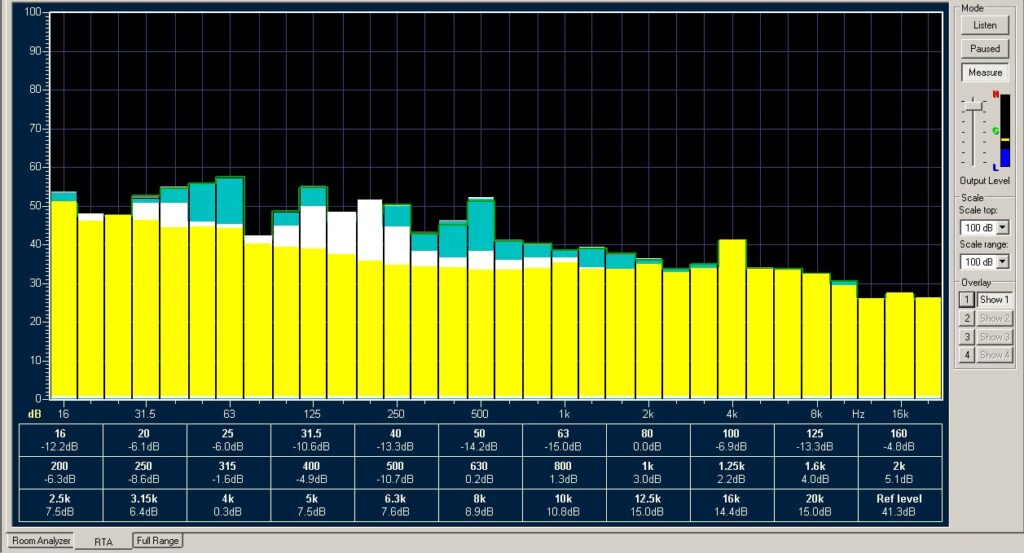One of the biggest challenges with room acoustics in just about any listening space is the Ambient Noise Floor. Unless your listening room is an underground bunker out in the country you probably have outside noise sources and they’re not helping your sound. Fighting a high noise floor requires you to turn up the volume of your system, which creates unwanted acoustic interactions within your room…a no-win situation. Achieving a truly black background in your music is very difficult unless your listening room noise floor is lower than 30dB. A simple way to measure the room noise is by downloading one of the free sound meter apps for mobile phone, on Android or iPhone.
The Jaguar Listening Studio is located in Downtown Bellevue, about six blocks from the 405 freeway. Not much we can do to correct that…I keep my fingers crossed that the lone single-story building across the street is eventually torn down and replaced with a tall building, which would probably give us a notable improvement. There’s also a street out front that gets busy around 5pm; the average noise in our room can get as high as 45dB during the day. However, our noise floor is somewhat low in the evening (about 25-30dB), which is the reason I eventually decided to only host listening sessions with clients in the evening.
One noise problem I have some ability to correct is the noise made by our refrigerator; it’s a relatively new GE, but like most fridges in the 18-20 cubic ft. range it’s noisy and there’s not enough space to fit a larger, quieter unit. When listening late at night when everything is closer to dead-quiet you don’t want to hear the fridge coming on for 10 minutes.
To correct this problem I installed 2′ x 4′ x 2″ rigid fiberglass panels behind the fridge. Rigid fiberglass is typically used in acoustic panels, because of its sound absorption capabilities throughout the frequency spectrum (substantially more effective than acoustic foam), especially low bass. The only other material that’s more effective with low bass is mineral wool, which is often used in combination with rigid fiberglass in constructing bass traps. Owens Corning manufactures its 701, 703 and 705 series panels (the higher model numbers indicate a higher density). The absorption coefficients for this product can be seen in the chart below. However, for my project I used Knauf brand, 3lb, 2″, panels, which are equivalent to the Owens 703, but don’t contain the noxious formaldehyde binder. I chose to double up the 2″ panels for a total thickness of 4″, to absorb more low frequency noise.

Check out this noise measurements below from our XTZ Room Analyzer hardware/software kit. This device gives a more detailed measurement than a phone sound meter, showing separate frequencies levels from 15Hz to 20Khz. There’s a lot going on in this image, because I’ve superimposed three separate measurements on top of each other. The blue bars (and the top of all bars) represent maximum noise, with the fridge on and no insulation. The yellow bars overlap the blue and represent the minimum noise, with the fridge off. The white bars between the blue and yellow represent the noise above the minimum, with the fridge on and 4″ of insulation behind it. In other words, all the color above the yellow bars is noise made by the fridge. The blue area represents fridge noise that has now been absorbed and the white area represents the remaining fridge noise. 
Some problems with Ambient Listening Room Noise can be fixed and others can’t, but it’s important to be aware of your room noise level, its sources and the overall effect on your sound.
